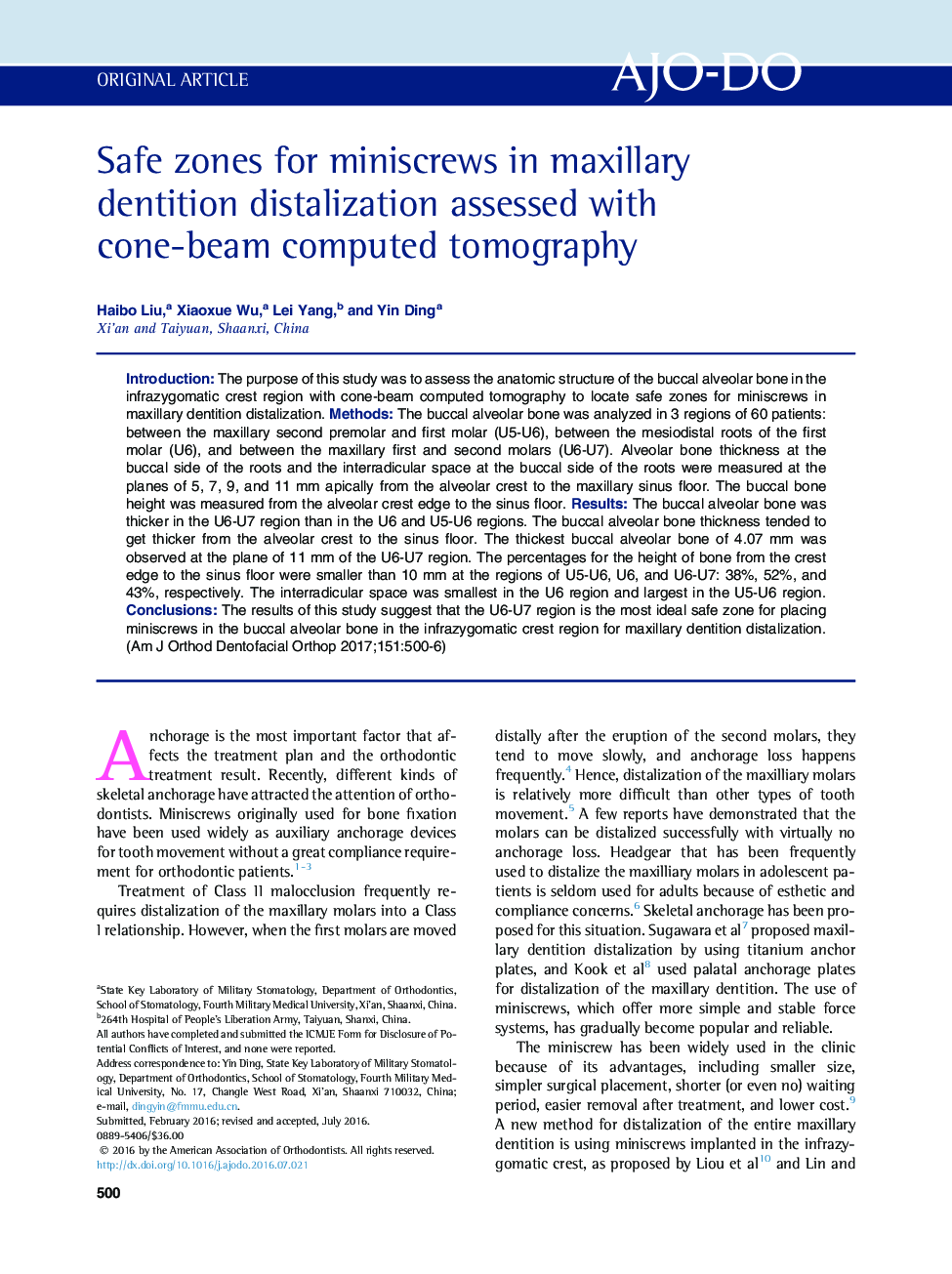| Article ID | Journal | Published Year | Pages | File Type |
|---|---|---|---|---|
| 5637718 | American Journal of Orthodontics and Dentofacial Orthopedics | 2017 | 7 Pages |
â¢Buccal alveolar bone was thicker in the U6-U7 region than in the U6 and U5-U6 regions.â¢Buccal alveolar bone thickness increased from the alveolar crest to the sinus floor.â¢Interradicular space was greatest in the U5-U6 region and least in the U6 region.â¢For miniscrew placement in the buccal alveolar bone in the infrazygomatic crest, U6-U7 is preferred.
IntroductionThe purpose of this study was to assess the anatomic structure of the buccal alveolar bone in the infrazygomatic crest region with cone-beam computed tomography to locate safe zones for miniscrews in maxillary dentition distalization.MethodsThe buccal alveolar bone was analyzed in 3 regions of 60 patients: between the maxillary second premolar and first molar (U5-U6), between the mesiodistal roots of the first molar (U6), and between the maxillary first and second molars (U6-U7). Alveolar bone thickness at the buccal side of the roots and the interradicular space at the buccal side of the roots were measured at the planes of 5, 7, 9, and 11 mm apically from the alveolar crest to the maxillary sinus floor. The buccal bone height was measured from the alveolar crest edge to the sinus floor.ResultsThe buccal alveolar bone was thicker in the U6-U7 region than in the U6 and U5-U6 regions. The buccal alveolar bone thickness tended to get thicker from the alveolar crest to the sinus floor. The thickest buccal alveolar bone of 4.07 mm was observed at the plane of 11 mm of the U6-U7 region. The percentages for the height of bone from the crest edge to the sinus floor were smaller than 10 mm at the regions of U5-U6, U6, and U6-U7: 38%, 52%, and 43%, respectively. The interradicular space was smallest in the U6 region and largest in the U5-U6 region.ConclusionsThe results of this study suggest that the U6-U7 region is the most ideal safe zone for placing miniscrews in the buccal alveolar bone in the infrazygomatic crest region for maxillary dentition distalization.
